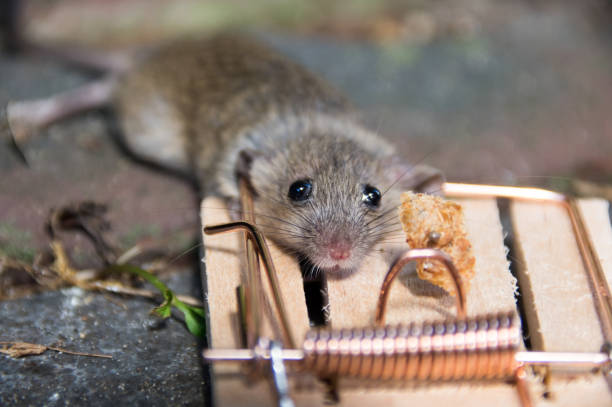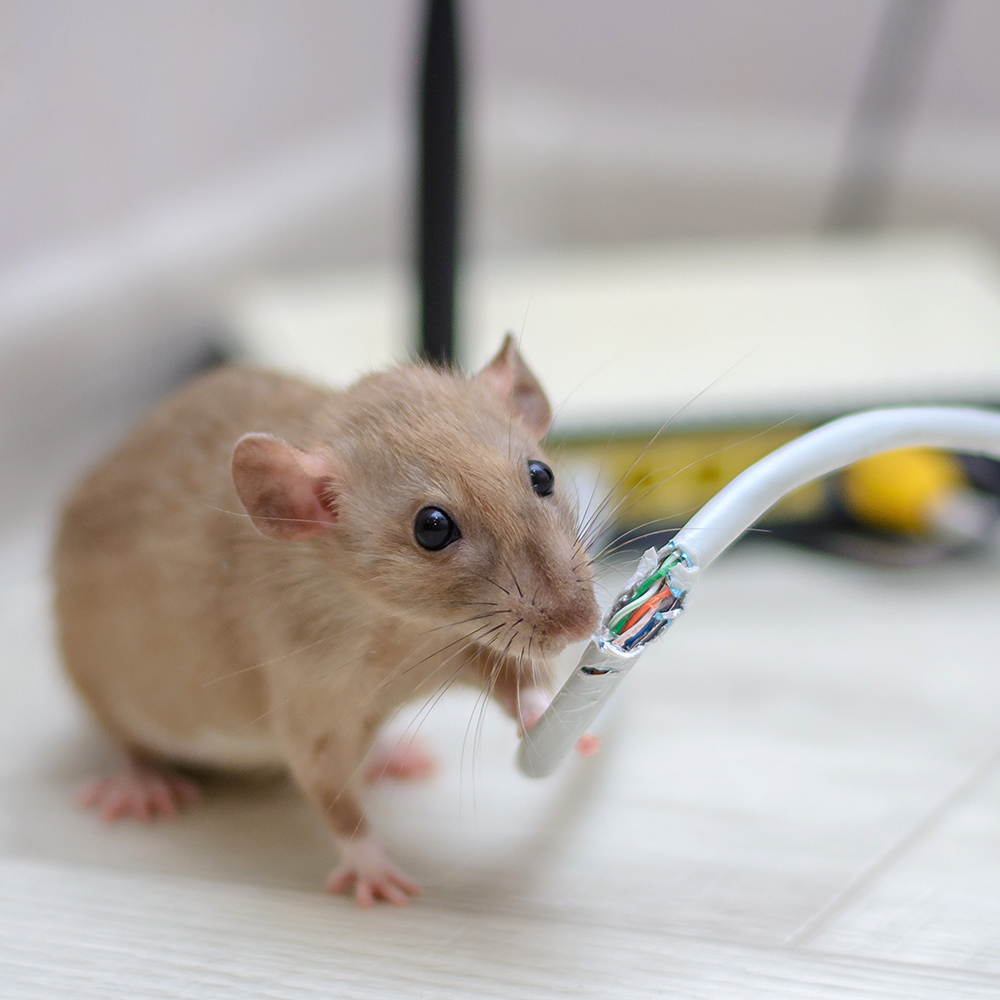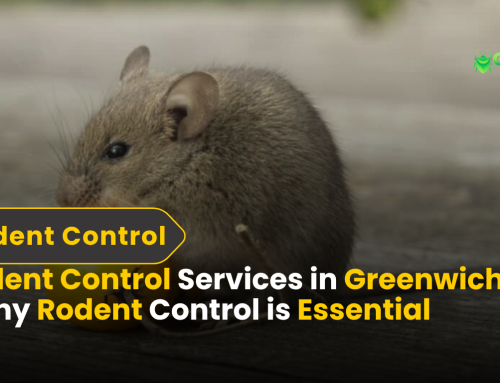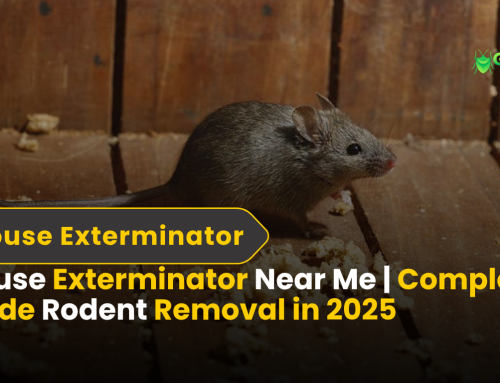How to Get Rid of Mice: A Complete Guide to Eliminating and Preventing Infestations
Mice infestations can be a major problem for homeowners, leading to property damage, health risks, and food contamination. These small rodents can chew through wires, insulation, and wood, causing costly repairs. Additionally, they carry diseases such as Hantavirus and Salmonella, posing serious health risks to your family. If you’ve noticed small droppings, gnawed food packaging, or scratching noises in your walls, you likely have a mouse problem that needs immediate attention.
Mice are highly adaptable and reproduce quickly, making it crucial to act fast before a small issue turns into a full-blown infestation. Common entry points include small gaps in walls, vents, and foundations. Once inside, they seek food, water, and shelter, making kitchens, basements, and attics prime locations for nesting.
In this comprehensive guide, we’ll explore the most effective ways to get rid of mice, including traps, natural repellents, and professional extermination. We’ll also debunk common myths, answer frequently asked questions, and discuss long-term prevention strategies to keep your home mouse-free. Whether you’re dealing with an active infestation or looking to prevent one, understanding mouse behavior and implementing the right control methods will help safeguard your home and health.
6 Major Signs of a Mouse Infestation
Mice are small, elusive creatures that often go unnoticed until an infestation becomes severe. They are nocturnal and tend to hide in dark, secluded areas, making it difficult to spot them directly. However, they leave behind clear signs of their presence. Identifying these early warning signs can help you take swift action before the problem escalates.
1. Droppings
One of the most common indicators of mice is their droppings. These are small, dark, and rice-shaped, typically found near food sources, in cabinets, drawers, or hidden corners. Fresh droppings are soft and moist, while older ones are dry and brittle.
2. Gnaw Marks
Mice have strong teeth that grow continuously, causing them to chew on almost anything—wood, wires, plastic, and even drywall. Gnawed furniture, electrical wiring, and food packaging are clear signs of an infestation.
3. Scratching Noises
Hearing scratching or scurrying sounds at night, especially in walls, ceilings, or under floors, suggests mice are actively moving around in search of food and nesting spots.
4. Unpleasant Odor
A strong, musky smell is another indicator of a mouse problem. Their urine carries a distinct ammonia-like odor, which becomes more noticeable in enclosed spaces.
5. Nests
Mice build nests using shredded paper, fabric, plant materials, and insulation. These nests are usually found in attics, basements, inside walls, or behind appliances.
6. Food Tampering
Mice often chew through food packaging, leaving holes and scattered crumbs behind. They also contaminate food with their droppings and urine.

How to Get Rid of Mice: 6 Step-by-Step Methods
1. Identify Entry Points and Seal Them
Mice can squeeze through openings as small as a dime, making it essential to inspect and seal any potential entry points in your home. Even tiny gaps can serve as an access route for these rodents, allowing them to enter and establish nests.
Key Areas to Inspect and Seal:
- Cracks in walls and foundations – Check both interior and exterior walls for small openings.
- Gaps around pipes and vents – Mice can enter through utility lines and vent openings.
- Holes near windows and doors – Ensure there are no spaces around frames or under doors.
- Openings in attics and basements – These areas are common entry points due to their less frequent use.
To effectively block these entry points, use durable materials such as:
✔ Steel wool – Difficult for mice to chew through.
✔ Caulk – Seals small gaps effectively.
✔ Metal mesh – Prevents entry in larger gaps and vents.
2. Eliminate Food and Water Sources
Mice enter homes primarily in search of food, water, and shelter. By eliminating these resources, you can make your home less attractive to rodents and reduce the chances of an infestation. Even small food particles or accessible water sources can sustain mice, so maintaining cleanliness and proper storage is essential.
Steps to Remove Food and Water Sources:
- Store food in airtight containers – Mice can easily chew through plastic bags and cardboard boxes. Keep dry goods like grains, cereals, and pet food in sealed glass or metal containers.
- Clean up crumbs and spills immediately – Even small food particles left on countertops or floors can attract mice and help to get rid of mice with techniques . Regularly sweep and wipe down kitchen surfaces.
- Take out the trash regularly – Dispose of garbage in sealed bins and empty them frequently to avoid attracting rodents.
- Keep pet food sealed and avoid leaving it out overnight – Mice will feed on pet food if left uncovered, so store it securely and remove uneaten portions.
3. Use Mouse Traps
Snap traps are one of the most commonly used and effective tools for catching mice. These traditional traps work by instantly killing the mouse when triggered, making them a humane option when set up correctly.
Key Features of Snap Traps:
✔ Highly effective – Quickly eliminates mice when placed in high-activity areas.
✔ Uses bait – Works best with peanut butter, cheese, or seeds to attract mice.
✔ Quick and humane – If positioned properly, the trap delivers an instant kill, preventing unnecessary suffering.
✔ Reusable and cost-effective – Can be reset and used multiple times, making it an economical choice.
For best results, place snap traps along walls, near entry points, or in hidden corners where mice frequently travel. Regularly check and reset traps to ensure continued effectiveness.
1.Glue Traps
Glue traps are another method used to capture mice, but they come with significant drawbacks. These traps consist of a sticky surface that captures mice when they walk over it, making it easy to dispose of them.
Pros of Glue Traps:
✔ Easy to use – Simply place them in areas where mice are active.
✔ Captures mice without the need for bait – No need to worry about luring them in with food.
Cons of Glue Traps:
Considered inhumane – Mice often suffer prolonged distress while stuck to the trap, and they may struggle to escape.
Takes time to kill – The trapped mice can remain alive for a long time, causing unnecessary suffering.
Difficult disposal – Removing a live mouse can be unpleasant and requires caution.
2. Live Traps
Live traps offer a more humane option for dealing with mice infestations. These traps are designed to capture mice without harming them, allowing for safe relocation. If you prefer to avoid killing mice, live traps provide an ethical solution.
Key Features of Live Traps:
✔ Humane – Rid of mice are captured without being injured, making them a great option for animal lovers.
✔ Easy to use – Simply bait the trap with food, such as peanut butter or seeds, and set it where mice are active.
✔ Safe relocation – Once trapped, you can release the mice far away from your home, ensuring they do not return.
Considerations:
Requires timely release – Mice must be released promptly to avoid stress or harm.
Less effective over time – If not managed properly, mice may return, especially if the infestation is not fully addressed.
Place traps along walls, in corners, and near areas where mice are active.

4. Use Rodenticides with Caution
Poison baits, or rodenticides, can be an effective method for controlling mouse infestations, especially in severe cases. These baits are designed to kill mice after they ingest them, making them a quick solution for eliminating rodents. However, there are significant risks associated with their use, and they should be handled with caution.
Risks of Poison Baits:
- Harm to pets and children – If ingested, rodenticides can be toxic to pets and children, making them a hazardous option in households with animals or young ones. Always place bait in areas inaccessible to pets or children.
- Mice may die in hidden areas – After ingesting the poison, mice often retreat to secluded spots, such as walls, attics, or crawlspaces, to die. This can lead to unpleasant odors as the decomposing body releases a foul smell, which can linger for days or even weeks.
- Use in extreme cases – Due to the risks involved, poison baits are best used as a last resort or in situations where other methods, like traps, have failed. It is also advisable to seek professional pest control services when using rodenticides to ensure proper placement and safety.
5. Natural Remedies to Repel Mice
If you prefer non-toxic methods to deal with a rid of mice infestation, several natural repellents can help deter mice from entering your home. While these methods may not be as immediately effective as traps or poisons, they are a safer, more humane option for those who want to avoid chemicals. Here are some natural remedies to consider:
1. Peppermint Oil
Mice are repelled by the strong, pungent scent of peppermint oil. To use this method, soak cotton balls in the oil and place them near entry points, nests, or areas where you’ve seen activity. Refresh the cotton balls every few days to maintain the scent.
2. Vinegar and Water Spray
A simple solution of vinegar and water can help rid of mice from affected areas. The strong smell of vinegar is unpleasant to mice, so spray it around entry points, in cabinets, or other high-traffic areas.
3. Ammonia
Ammonia has a sharp odor that mimics the scent of predator urine, which can scare off mice. Mix ammonia with water and spray it in places where mice have been active.
4. Ultrasonic Devices
Ultrasonic devices emit high-frequency sounds that are uncomfortable for mice, causing them to leave the area. However, the effectiveness of these devices can vary, and some mice may become accustomed to the sound over time.
6. Call a Pest Control Professional
If your DIY methods fail or the infestation becomes overwhelming, hiring a professional pest control expert is the best solution. These specialists have the knowledge, tools, and experience to effectively deal with mouse problems, especially in large infestations.
A pest control expert can perform a thorough inspection of your home to identify all entry points, nests, and hidden areas where mice may be hiding. They can also apply more advanced treatments, such as professional-grade traps or baits, which may be more effective than DIY options.
In addition to extermination, a pest control service can offer preventative measures, such as sealing entry points, offering ongoing monitoring, and providing advice on long-term solutions. If the infestation is severe or recurring, professional help ensures that the problem is addressed quickly and safely, protecting your home and health.
Common Myths About Mice
Myth 1: Mice Love Cheese
While cartoons depict mice loving cheese, they actually prefer grains, nuts, and sweets like peanut butter.
Myth 2: Cats Always Get Rid of Mice
While some cats hunt mice, not all do. Additionally, mice may still hide in walls where cats can’t reach them.
Myth 3: A Clean House Won’t Have Mice
Even the cleanest homes can attract mice if they provide warmth, shelter, and access to food.
Myth 4: Mice Only Live in Dirty Environments
Mice seek food and shelter, not filth. They can infest even the most well-maintained homes.
Myth 5: Mice Will Leave on Their Own
Mice breed rapidly. Ignoring an infestation will only make it worse.
Frequently Asked Questions (FAQs)
Q: How do I know if I have one mouse or an infestation?
A single mouse sighting often means more are hiding. If you see droppings, gnaw marks, or hear scratching noises, it’s likely an infestation.
Q: How fast do mice reproduce?
Mice reproduce rapidly. A single pair can produce up to 60 offspring per year, quickly leading to a major infestation.
Q: Can mice carry diseases?
Yes, mice spread diseases such as Hantavirus, Salmonella, and Leptospirosis through droppings, urine, and contaminated food.
Q: How long does it take to get rid of mice?
Rid of Mice depends on the severity. With proper trapping and prevention, you may see results in a few days to a couple of weeks.
Q: What should I do if I find a dead mouse?
Wear gloves, place the mouse in a sealed plastic bag, and dispose of it in an outdoor trash bin. Clean the area with disinfectant.
Q: How can I prevent mice from coming back?
- Seal all entry points to get easily rid of mice.
- Keep food sealed and areas clean.
- Regularly check for signs of activity.
- Use deterrents like peppermint oil or ultrasonic repellents.

Conclusion: The Key to Successful Mouse Control
Rid of mice infestation requires a comprehensive approach, combining prevention, trapping, and, when necessary, professional extermination. The first step is sealing entry points around your home, including cracks, gaps around pipes, and holes near windows and doors. This prevents mice from entering and establishing nests.
Next, remove food sources that attract mice by storing food in airtight containers, cleaning up crumbs and spills immediately, and disposing of trash regularly. Consider using traps such as snap traps or live traps to capture and eliminate mice. These methods, when used strategically in areas with high mouse activity, can help reduce the population.
While natural repellents like peppermint oil and vinegar sprays may offer temporary relief, they are not as effective in large infestations. For severe problems, hiring a professional pest control service is the best solution.
Mice not only cause significant property damage but also pose serious health risks by spreading diseases. By addressing the issue early, you can prevent an infestation from spreading further. Consistency and vigilance are key in keeping your home rid of mice free. By understanding the facts, debunking common myths, and applying the right strategies, you can protect your home from these unwanted rodents and ensure long-term prevention.










